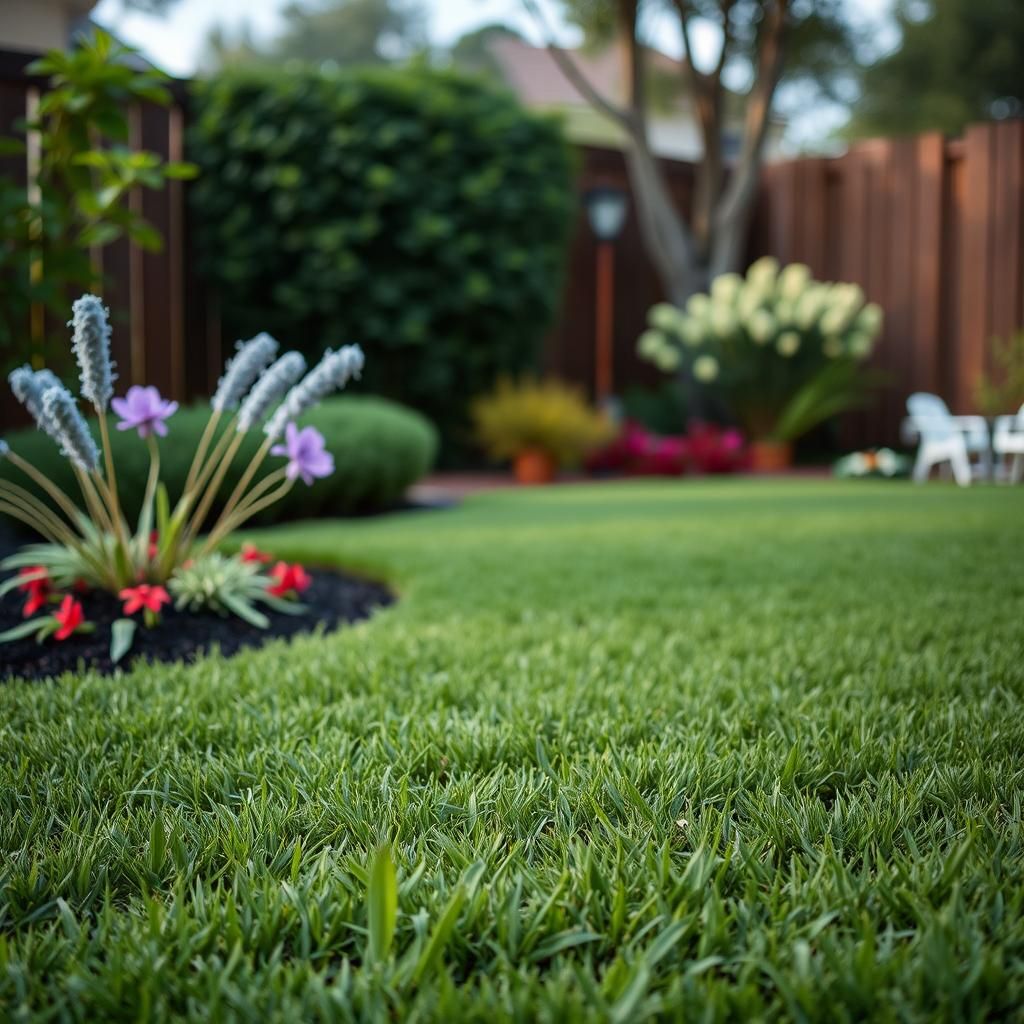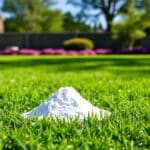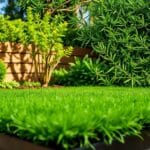What is Another Word for Lawns? Discover Synonyms and Related Terms

When discussing outdoor spaces, the term lawn often comes to mind, conjuring images of lush, green areas that enhance the beauty of homes and gardens. However, the English language is rich with variety, offering numerous synonyms and related terms for lawns. Understanding these alternatives not only broadens vocabulary but also provides insight into the different contexts in which these words can be used. In this article, we will explore various synonyms for lawns, delving into their meanings and how they contribute to our appreciation of green spaces. Join us as we uncover the linguistic landscape surrounding this cherished outdoor feature.
Synonyms for Lawns
Lawns, typically defined as areas of land covered with grass that are maintained for aesthetic and recreational purposes, can be referred to by several other terms. Depending on the context, synonyms include grass, turf, sod, greensward, and meadow. Each of these words carries its own connotations; for instance, turf often implies a more curated and manicured area, while meadow suggests a more natural and wild grassy area. Understanding these synonyms can enhance vocabulary and aid in more descriptive writing about landscaping, gardening, or outdoor spaces.
Grass
The term grass refers to the common plant that constitutes the primary covering of a lawn. It is characterized by its green, blade-like leaves and is often considered the foundational component of any lawn. Grass types vary, offering different textures and colors, and are chosen based on climate, usage, and aesthetic preferences. In many contexts, when one refers to a lawn, they might simply mention grass to denote the area.
Turf
Turf is commonly used to describe a type of grass surface that is often specially cultivated for athletic fields, golf courses, and residential lawns. Turf is often made from various species of grasses that are specifically selected for their durability and aesthetic properties. Moreover, the term can also refer to the sod layer, which includes soil and grass roots that are rolled out to establish a new lawn quickly, ensuring a green and lush appearance almost immediately.
Sod
The word sod specifically denotes a layer of earth in which grass and the roots of the grass plants are growing. It is often used in landscaping, allowing for the rapid establishment of a lawn. Sod can be purchased in rolls and applied to bare soil, providing instant greenery and minimizing soil erosion. This term emphasizes the cultivation and preparation of grass for functional lawns.
Greensward
The term greensward is a more archaic word that describes a grassy area or lawn, typically emphasizing its lushness and vibrant green color. While less commonly used today, it evokes images of expansive, meticulously maintained lawns often found in classic gardens or historical estates. The usage of this term can impart a sense of elegance and formality to descriptions of green spaces.
Meadow
A meadow refers to a field habitat, primarily dominated by grass and other non-woody plants. Unlike the manicured appearance of lawns, meadows often have a more natural and free-growing quality. They can support a diverse ecosystem of plants and animals, making this term particularly relevant in discussions about biodiversity and natural grasslands.
| Synonym | Description |
|---|---|
| Grass | The primary plant covering of lawns. |
| Turf | A cultivated surface of grass used for various outdoor areas. |
| Sod | Pre-grown grass and soil layer for instant lawn establishment. |
| Greensward | An archaic term for lush, vibrant grassy areas. |
| Meadow | A natural, non-manicured area dominated by grass and wild plants. |
What are other words for lawn?

While the term lawn is widely recognized, there are several synonyms and related terms that can be used to describe grassy areas typically found in gardens, parks, or yards. Here are some alternative words for lawn:
- Grass
- Sod
- Turf
- Green
- Meadow
Synonyms for Lawn
The word lawn can refer to various types of grassy areas, and its synonyms can emphasize different aspects or uses of such spaces.
- Grass: A more general term that refers to the vegetation typically covering lawns.
- Turf: Often used to describe the top layer of soil held together by the roots of the grass, but can also refer to the actual grassy area.
- Meadow: Usually refers to a natural, open area filled with wild grasses and flowers, less maintained than a traditional lawn.
Types of Lawns
Different types of lawns serve various purposes and can vary by care level and usage. Recognizing these distinctions can lead to better maintenance strategies.
- Residential lawns: Commonly found in front or backyards, designed for aesthetic appeal and recreational use.
- Commercial lawns: Typically maintained for businesses or public buildings, intended to enhance the exterior appearance.
- Sports lawns: Specifically cultivated for athletic fields, requiring different maintenance for durability and performance.
Common Uses of Lawns
Lawns serve multiple functions in both residential and public spaces, influencing landscape design and user experience.
See also:
- Recreation: Lawns are often used for activities such as picnics, sports, and family gatherings.
- Aesthetics: A well-maintained lawn enhances the visual appeal of a property, contributing to curb appeal and overall property value.
- Environmental Benefits: Lawns play a role in air quality improvement, soil retention, and providing habitats for wildlife.
Maintenance of Lawns
Proper lawn care ensures lush growth and health, which in turn keeps the grassy area aesthetically pleasing and functional.
- Mowing: Regular cutting helps maintain an even height and encourages healthy growth.
- Fertilization: Applying nutrients to the lawn can improve soil quality and grass health.
- Watering: Adequate watering is crucial, particularly in dry seasons, to keep grass vibrant and healthy.
Landscaping with Lawns
Incorporating lawns into landscaping designs adds depth and variety to outdoor spaces, complementing other plants and features.
- Bordering plants: Using shrubs or flower beds around a lawn can enhance its appeal.
- Patios and walkways: A lawn can serve as a transition between hardscaped areas like patios and gardens.
- Zones for activities: Designating specific lawn areas for play or relaxation can optimize space usage in landscaping.
What is a fancy word for landscaping?

The fancy word for landscaping is landscape architecture. This term encompasses the design and planning of outdoor spaces, blending both art and science to create aesthetically pleasing and functional environments. Landscape architecture involves the management of land, considering the environmental implications of design choices, and often incorporates various elements such as plants, water features, and built structures.
Understanding Landscape Architecture
Landscape architecture is the art and science of designing outdoor spaces. This discipline combines environmental stewardship, sustainable practices, and aesthetic considerations to create settings that enhance the quality of life. Landscape architects work on a range of projects, from public parks to private gardens.
- Important Disciplines: It includes elements like botany, ecology, engineering, and environmental psychology.
- Professional Roles: Landscape architects are involved in planning, designing, and managing landscapes.
- Historical Perspective: The profession has evolved over time, addressing societal needs through various movements.
Elements of Landscape Architecture
Effective landscape architecture integrates multiple elements to create cohesive outdoor environments. These elements can include plant materials, hardscape, water features, and lighting, each serving a specific purpose while enhancing the overall aesthetics.
- Plant Materials: Selection and arrangement of flora to complement the design.
- Hardscape: Use of non-plant elements like pathways, walls, and patios.
- Water Features: Incorporation of ponds, fountains, or streams for aesthetic and functional purposes.
- Lighting: Strategic illumination to highlight features and improve safety.
Importance of Sustainability
Sustainability plays a crucial role in landscape architecture, focusing on creating environments that are ecologically friendly and economically viable. It's about designing spaces that not only look good but also benefit the environment.
- Eco-Friendly Practices: Use of native plants to reduce water consumption and support local ecosystems.
- Soil Management: Implementing practices that improve soil health and prevent erosion.
- Water Efficiency: Designing irrigation systems that conserve water.
Career Pathways in Landscape Architecture
The profession offers diverse career opportunities across various sectors. Landscape architects can work in private firms, government agencies, or as independent consultants, providing services that range from design to project management.
- Public Projects: Landscape architects often work on municipal parks and public spaces, enhancing community welfare.
- Corporate Sector: Designing landscapes for private enterprises, improving corporate identity and employee well-being.
- Consultancy: Many landscape architects provide expert advice and evaluation for existing landscapes.
Future Trends in Landscape Architecture
As society evolves, so do the trends in landscape architecture. The future is leaning towards more sustainable and technology-driven designs that respond to climate change and urbanization challenges.
- Smart Landscapes: Integration of technology to monitor and manage landscape health.
- Urban Greening: Emphasis on green roofs, vertical gardens, and urban forests to combat urban heat.
- Community Engagement: Increasing involvement of communities in the planning process to ensure designs reflect their needs.
What is the formal name for grass?

The formal name for grass is Poaceae, which is a family of flowering plants commonly known as grasses. This family includes a wide variety of species, commonly found in many environments across the globe. Members of the Poaceae family are characterized by their jointed stems, narrow leaves, and small flowers. The diversity of grasses is vast, contributing significantly to ecosystems and human agriculture.
Characteristics of Poaceae
The characteristics of the Poaceae family are what set them apart from other plant families. These features are essential for their survival and adaptability to different environments.
- Jointed Stems: Grasses typically have hollow stems that are divided by nodal joints, which provide flexibility.
- Narrow Leaves: The leaves of grass species are usually long and narrow, which can optimize water usage and light absorption.
- Flowers and Seeds: Grasses produce small flowers borne in spikelets, which can turn into seeds, providing a means of reproduction.
Ecological Importance of Grasses
Grasses play a crucial role in various ecosystems, impacting both flora and fauna. Their contributions are vital for environmental balance.
See also:
- Soil Stabilization: Grass roots help to hold soil in place, reducing erosion and improving soil health.
- Habitat and Food Source: Many animals rely on grasses for habitat and nutrition, making them essential for biodiversity.
- Carbon Sequestration: Grasses absorb carbon dioxide during photosynthesis, helping to mitigate climate change.
Uses of Grasses in Agriculture
Grasses are fundamental to agriculture, providing several key benefits that contribute to human food sources.
- Animal Feed: Many grasses are cultivated as forage for livestock, providing a critical source of nutrition.
- Cereal Crops: Species like wheat, rice, and corn belong to the Poaceae family, serving as staple foods for billions.
- Cover Crops: Grasses are often used in crop rotation and as cover crops to improve soil health and reduce weed competition.
Diversity within the Poaceae Family
The diversity within the Poaceae family is immense, comprising thousands of species adapted to a variety of environments.
- Native Grasses: Many regions have their native grass species, which are adapted to local climates and soils.
- Invasive Grasses: Some grass species become invasive, outcompeting local flora and altering ecosystems.
- Ornamental Grasses: Certain grasses are cultivated for aesthetic purposes in landscaping and gardening.
Challenges Facing Grasses
Despite their resilience, grasses face several challenges that threaten their survival and vitality.
- Climate Change: Changing weather patterns can impact grass growth and distribution.
- Habitat Loss: Urbanization and agriculture can lead to significant habitat destruction for grass species.
- Invasive Species: Non-native grasses can outcompete and displace native species, disrupting local ecosystems.
What is the American word for lawn?

The American word for lawn is indeed lawn. In both American and British English, the term refers to a stretch of grass, typically maintained and cared for, that is often found in yards or public parks. However, there are regional variations and phrases in American English that can be associated with the concept of a lawn.
Differences Between Lawn Types
The term lawn can refer to various types of grassy areas depending on usage and location. In the American context, the following types are notable:
- Front Yard Lawn: This is typically the most visible part of a home’s landscape, carefully mowed and manicured.
- Backyard Lawn: Generally used for recreational purposes, such as playing sports or hosting gatherings.
- Park Lawn: Found in public parks, these areas are often larger and maintained by city or municipal services.
Common Lawn Maintenance Practices
Maintaining a healthy lawn involves several practices that are essential for a lush appearance. Typical practices in American households include:
- Mowing: Regularly cutting the grass to keep it at an appropriate height.
- Fertilizing: Applying nutrients to the soil to promote growth and health.
- Watering: Ensuring the lawn receives adequate water, particularly during dry seasons.
Lawn Care Products
The lawn care industry in America offers numerous products aimed at assisting homeowners. Some of the most popular products include:
- Herbicides: Chemicals used to control unwanted weeds.
- Pesticides: Used to manage pests that can damage the lawn.
- Seed Mixes: Various grass seed combinations designed for specific climates and uses.
Lawn Culture in America
A well-maintained lawn is often considered a symbol of pride and homeownership in American culture. Many adopt practices that embody:
- Neighborhood Standards: Keeping lawns tidy to enhance neighborhood aesthetics.
- Seasonal Decorating: Changing decorations in accordance with seasons and holidays.
- Outdoor Activities: Using the lawn for family gatherings, barbecues, or sports.
Trends in American Lawn Design
Lawn design is evolving with increasing interest in sustainable practices. Current trends include:
- Xeriscaping: Designing landscapes that require little or no irrigation, often incorporating drought-resistant plants.
- Native Plant Lawns: Utilizing grass varieties and plants native to the area to promote local ecology.
- Artificial Turf: The growing popularity of synthetic grass as a low-maintenance alternative.
Questions from Our Readers
What is a synonym for lawns?
Lawns can be referred to by several other terms, but a common synonym is turf. This term generally describes an area covered with grass and other plants, often used in recreational areas and landscapes.
Are there different types of lawns?
Yes, there are various types of lawns, which can include sod, grassland, and greenery. Each type may vary in composition, maintaining different kinds of grasses or plants suited for particular climates and uses.
What is the difference between lawns and gardens?
While both lawns and gardens are outdoor spaces, a lawn primarily consists of grass and is maintained for aesthetics and recreational purposes, whereas a garden often includes a variety of plants, flowers, and vegetables organized in a more intricate manner.
See also:
How can I maintain a healthy lawn?
To maintain a healthy lawn, it's essential to focus on proper watering, mowing, and fertilization. Regularly aerating the soil and ensuring that grass receives adequate sunlight can also help in promoting a lush and vibrant green area.
https://youtube.com/watch?v=7FTwoP7JxZ8
If you want to read more articles like What is Another Word for Lawns? Discover Synonyms and Related Terms, we recommend you check out our Lawn category.
Leave a Reply
Related Articles